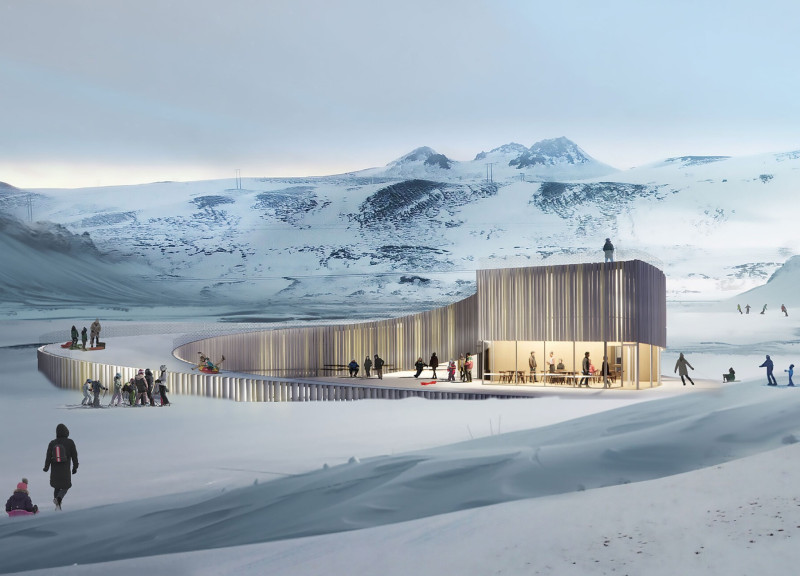5 key facts about this project
The design employs a coherent language that harmonizes with its surroundings, utilizing a blend of materials that speak to both durability and aesthetic appeal. Concrete serves as a primary structural element; it provides stability and facilitates the clean lines that define the exterior. This choice reflects a commitment to long-lasting architecture that can withstand the elements while maintaining a modern visual identity. Steel is used effectively for elements requiring strength, allowing for expansive glass openings that foster a transparent relationship with the environment. By prioritizing high-performance glass, the design maximizes natural light, creating a welcoming atmosphere and reducing reliance on artificial lighting.
The project is organized around several key functional areas. [Describe distinct spaces, such as communal areas, private sections, or multipurpose rooms.] For instance, the incorporation of outdoor spaces, including terraces or gardens, promotes interaction and enhances the building’s connection to the natural landscape. These areas serve not only as recreational spaces but also as extensions of indoor functions, encouraging a seamless flow between the interior and the exterior.
Unique design approaches are evident throughout the project, particularly in its attention to sustainability. The use of green roofs, rainwater harvesting systems, and energy-efficient insulation materials illustrates a conscientious effort to minimize environmental impact. Such features demonstrate an understanding of contemporary architectural responsibilities, prioritizing ecological stewardship without sacrificing design quality.
Further, the project adopts innovative technologies that streamline construction processes and improve usability. The integration of smart systems for energy management enhances the building's efficiency, allowing for real-time monitoring and adjustments that optimize performance. This data-driven approach to design exemplifies a forward-thinking mindset, positioning the project as a model for future developments.
An important aspect of the project is the socio-cultural relevance embedded within its architectural form. The design takes cues from local building traditions and reflects a careful consideration of cultural identities. This is accomplished through the use of locally sourced materials and architectural styles that resonate with the community's heritage. By embedding these elements into the project, the architects have created a space that acknowledges its roots while innovatively looking towards the future.
Throughout the design process, there is a clear focus on user interaction. The layout promotes natural movement and accessibility, ensuring that all users can navigate the space comfortably. The arrangement of rooms allows for flexibility, accommodating various functions from gatherings to individual activities. This versatility is crucial in serving a diverse user base, ultimately fostering a sense of belonging and community.
In summary, this architectural project is a thoughtful composition of thoughtful design, materiality, and respect for the environment and community. The embodiment of sustainability, innovative technology, and cultural relevance are woven seamlessly into its fabric, marking it as a notable addition to contemporary architecture. For those interested in a deeper exploration of this project, including its architectural plans and sections, further insights into its design philosophy, and detailed elements, it is encouraged to review the project presentation for a more comprehensive understanding of its architectural ideas and execution.


























